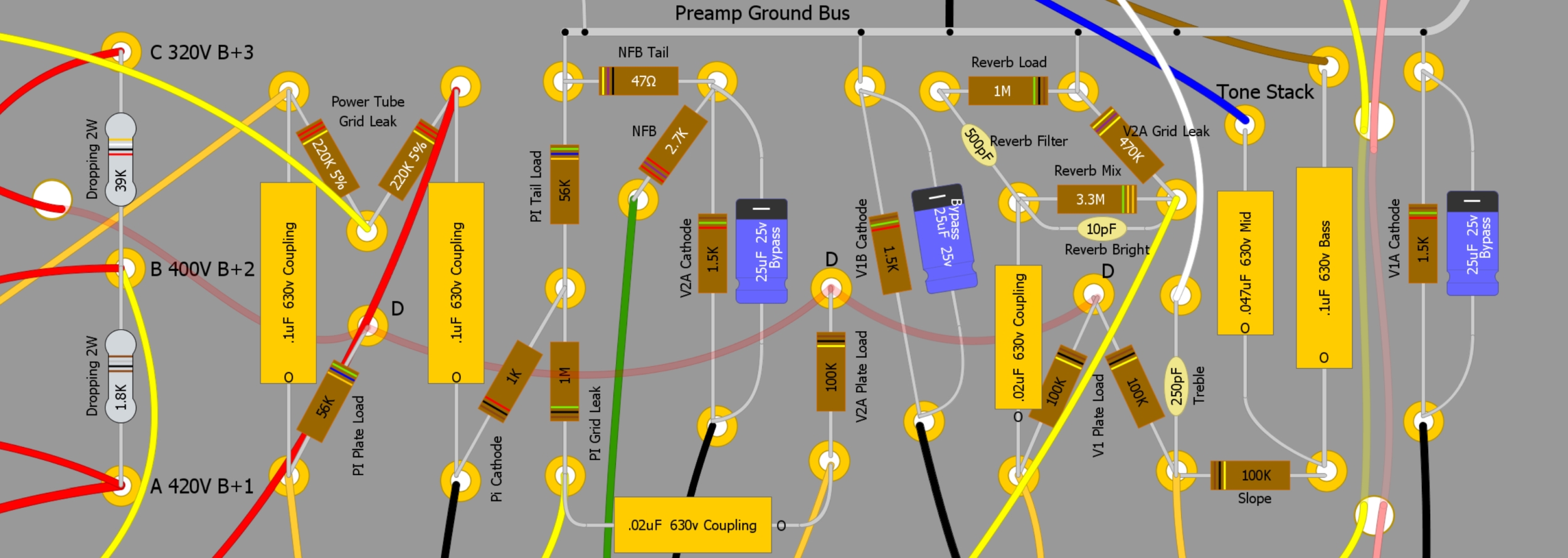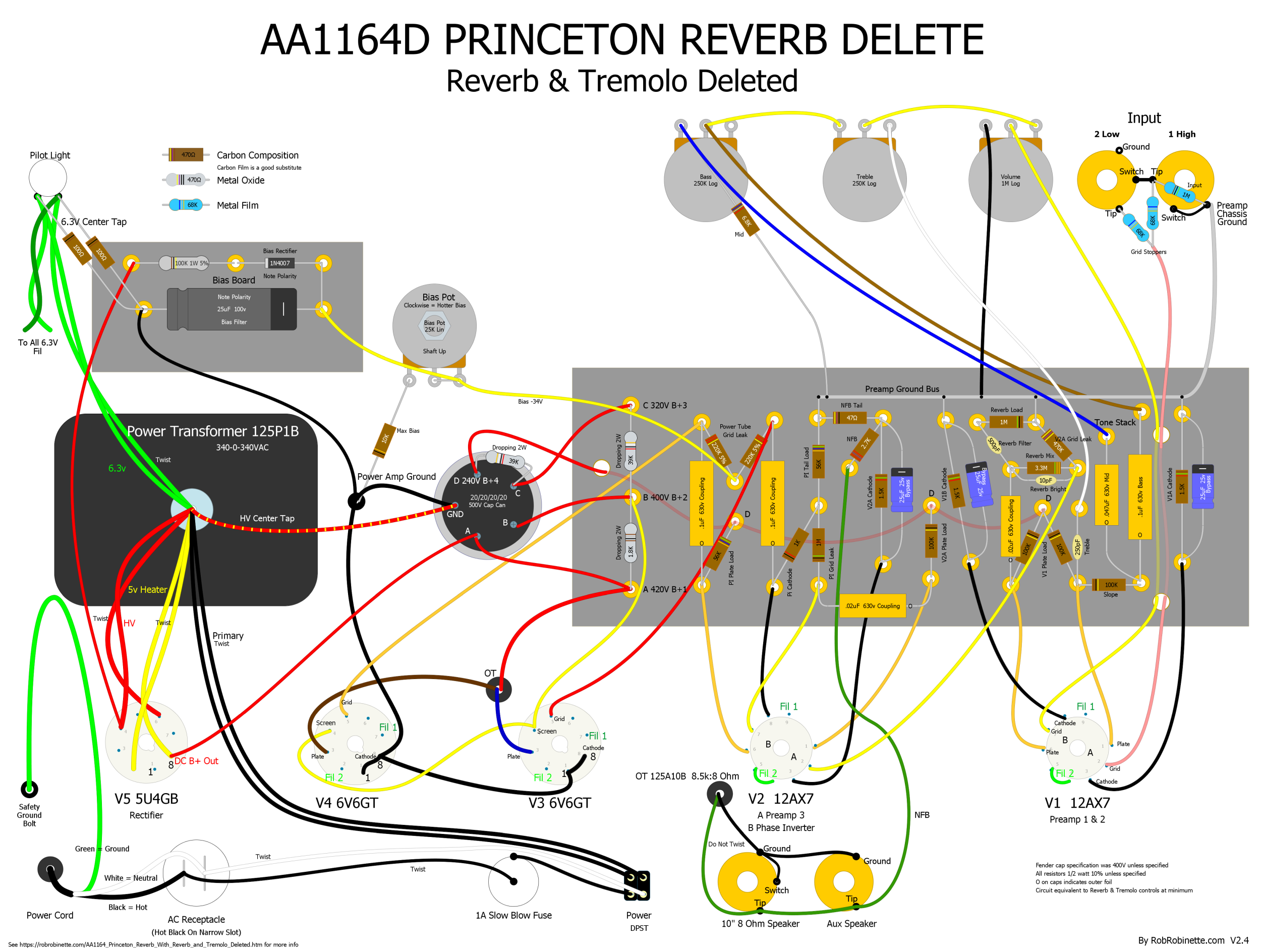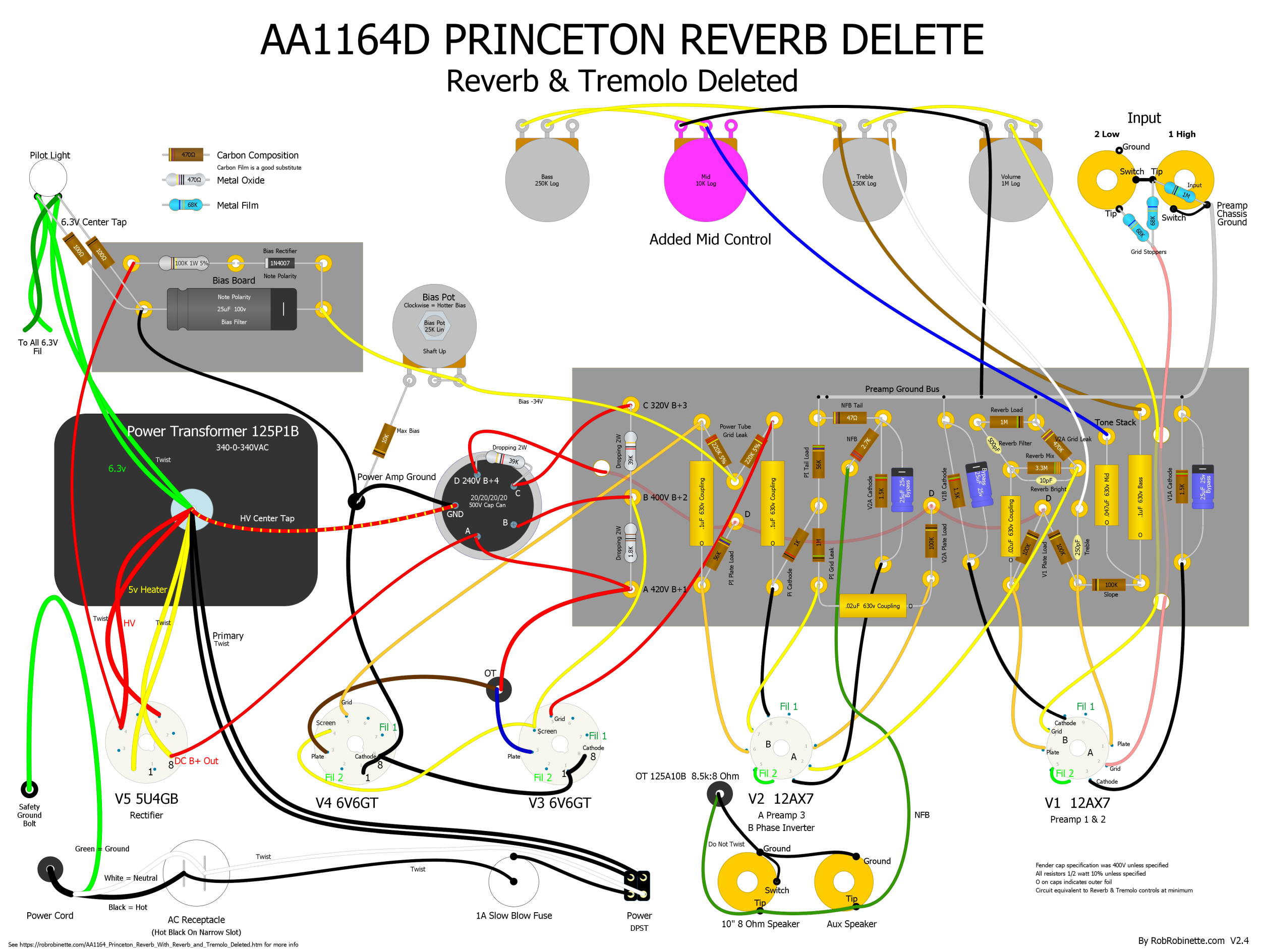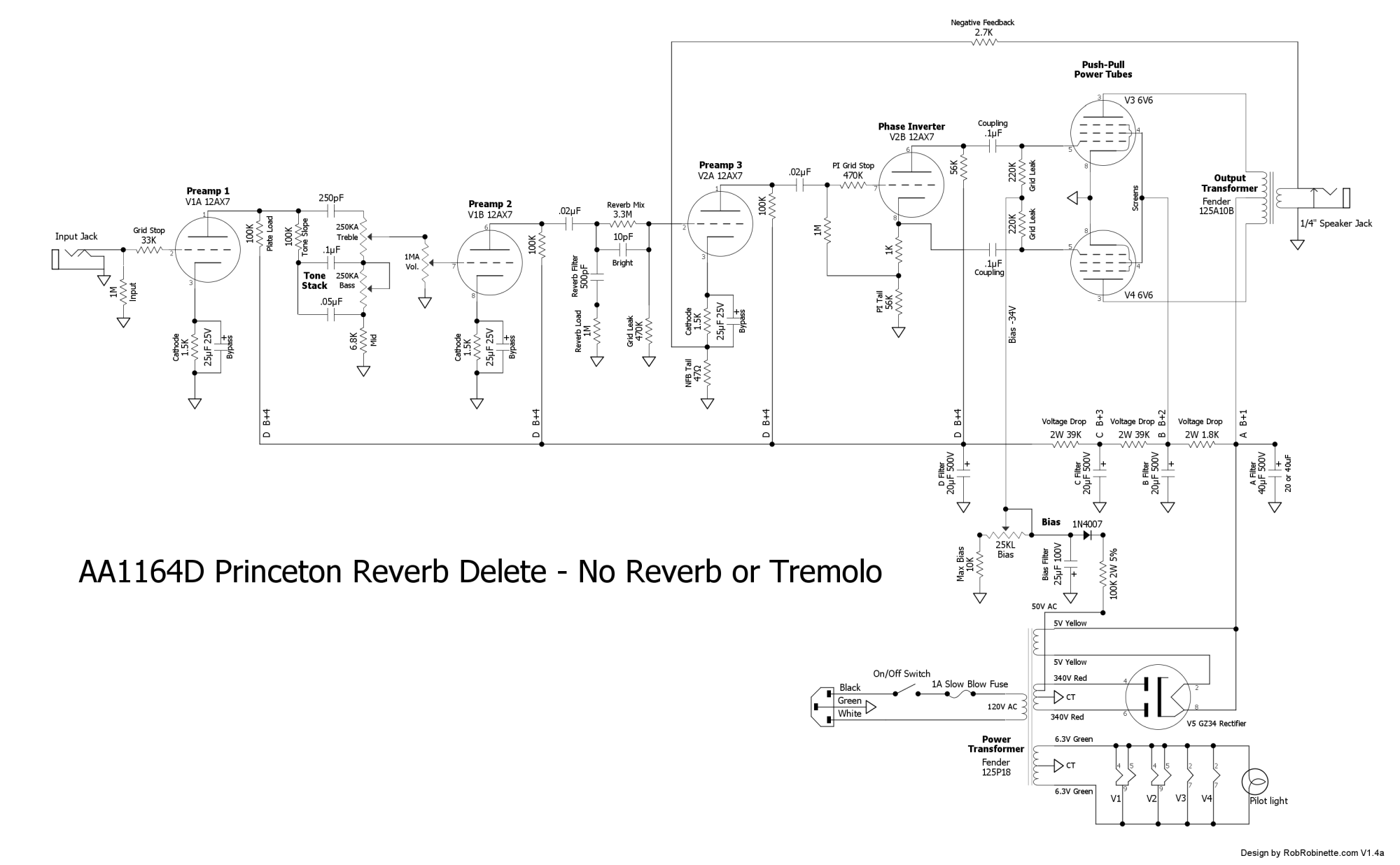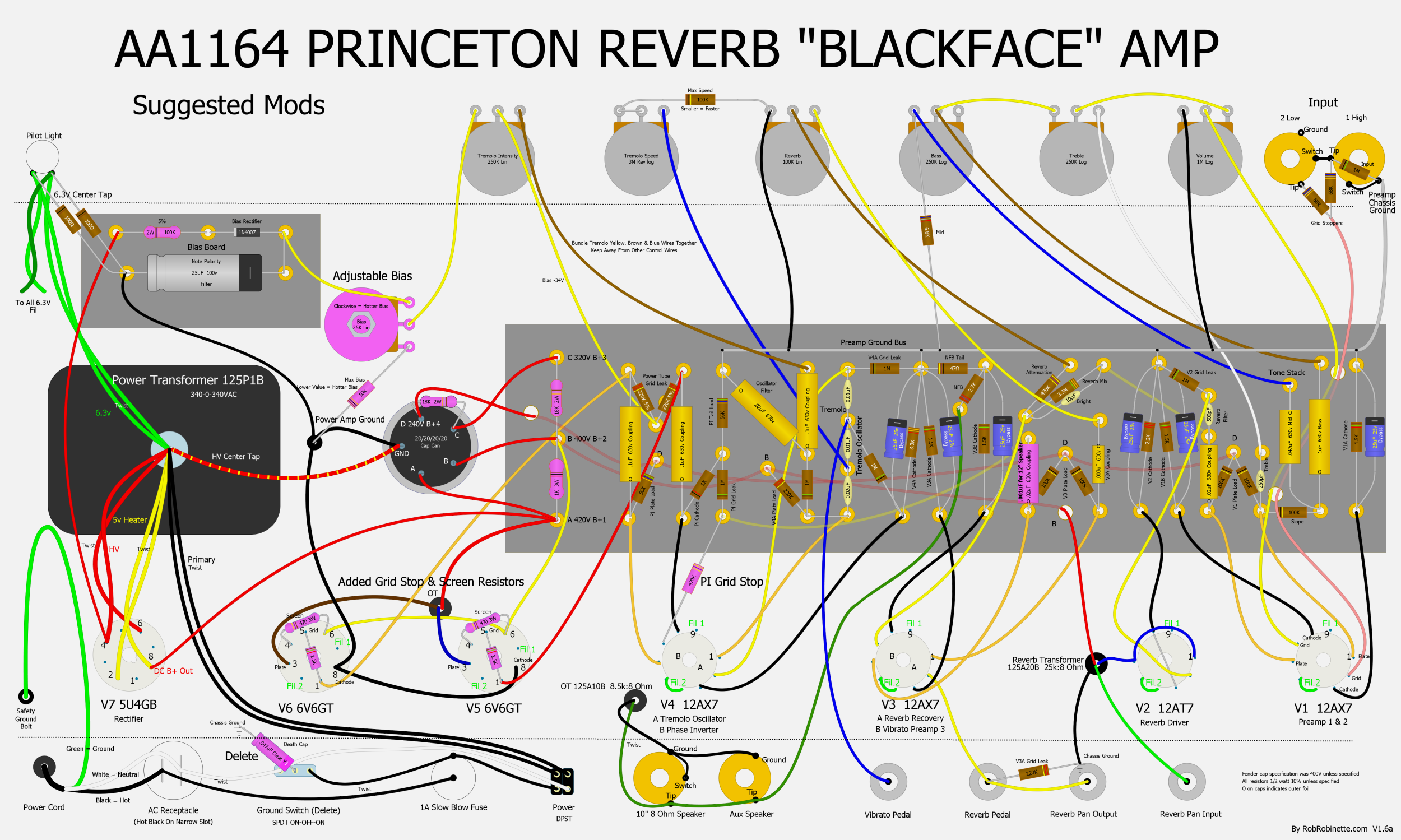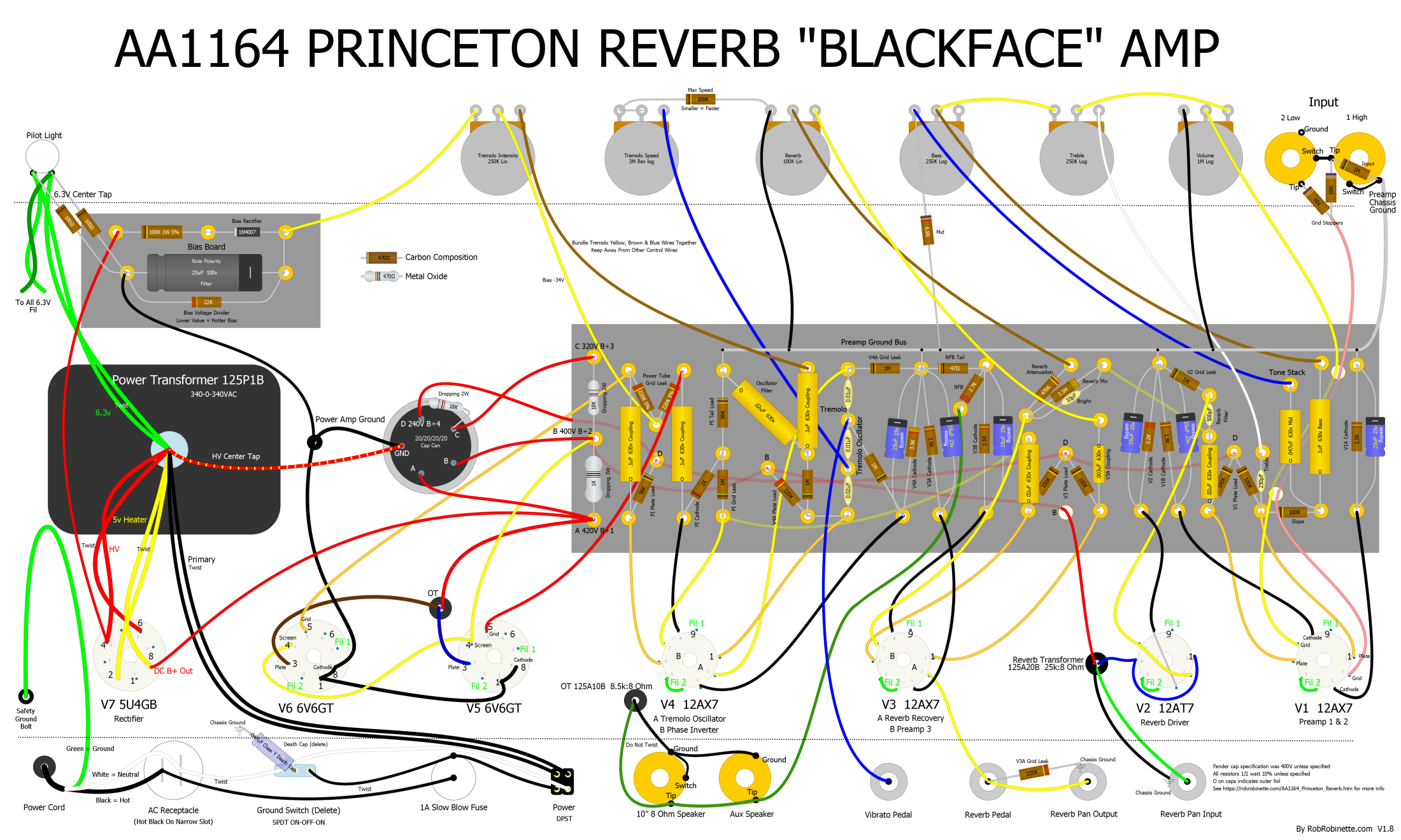Princeton Reverb With Reverb and Tremolo Deleted
By Rob Robinette
Have comments or corrections? Email rob at: robinette at comcast dot net
The AA1164 blackface Princeton Reverb is one of the greatest guitar amps ever created but it is a complex amp to build and troubleshoot. I created this version of the Princeton Reverb with the reverb and tremolo circuits deleted to simplify the build for the DIY amp builder. But why you ask, the blackface Princeton (tremolo but no reverb) is close enough, right? No, the Princeton has two preamp gain stages where the Princeton Reverb has three which makes a significant difference in gain and tone. This amp is designed to give you exactly what you get with a Princeton Reverb with tremolo and reverb set to minimum. I left in all the reverb and tremolo components that filter or place a load on the signal to provide the exact same tone as the Princeton Reverb. You can add a quality reverb and tremolo pedal like the Strymon Flint and you have a simple to build and maintain Princeton Reverb.
I also have a 1 watt Micro version of this amp.
The simplest way to build this amp is to buy a Princeton Reverb kit but substitute the circuit board shown below in the layout for the kit circuit board. You can upload the Hoffman Circuit Board and Hoffman Bias Board files to HoffmanAmps.com DIY File Analyzer and Doug will make eyelet or turret boards for you for a very reasonable price. I really like the Mojotone Princeton Reverb Combo and Head Amp kits. If you do buy a kit then the kit bias board will work just fine for this build.
I recommend using a blackface or silverface Princeton Reverb chassis, power transformer, output transformer and cab. A custom faceplate can be ordered to cover the excess control holes or you can add a Mid tone control, Presence control, master volume or other mods to fill the holes.
The three voltage dropping resistors were increased to compensate for the deletion of the four reverb and tremolo triodes. Since we have four less triodes pulling current through the voltage dropping resistors they all need to be increased to get the same voltage drop across them. The first 1k dropping resistor is increased from 1k to 1.8k. The second and third are increased from 18k to 39k.
If you'd like to step-it-up a little consider the very nice Princeton Reverb transformers from Allen Amps. The AllenAmps.com TO26 is a drop-in Princeton Reverb upgrade output transformer that is designed for 6V6, 6L6 and EL34 power tubes. If you are in Europe then the Tube Amp Doctor Princeton Reverb High Power power transformer is a good drop-in upgrade to run 6V6,6L6 and EL34 power tubes. The AllenAmps.com TP25 power transformer is also a drop-in upgrade that is designed to power 6V6, 6L6 and EL34 power tubes. If you really want to run 6L6 tubes in your Princeton Reverb this is the way to go. The Deluxe Reverb output transformer is also a drop-in replacement that will reduce compression, add some low end and add output power. It really helps with 6L6 tubes too.
If you would like a larger cab and 12 inch speaker you can always build this circuit into a blackface/silverface Deluxe or Deluxe Reverb chassis. You could even use a Deluxe Reverb kit for the build.
I added an adjustable fixed bias circuit since we don't have to worry about affecting the tremolo strength with a warm bias. The Princeton Reverb was biased cool at around 55% of max plate dissipation from the factory. The jumper between the bias pot terminals is a fail safe. If the pot wiper fails the amp will default to the coolest bias setting.
I highly recommend the addition of a 470k grid stopper resistor for the phase inverter as shown in the "Suggested Modifications" section of this webpage. It won't affect the clean tone but will prevent nasty "double frequency" phase inverter distortion when the amp is pushed hard. It will also make the amp more pedal friendly too.
Want to add a Master Volume, Presence Control or Mid/Raw Control? These mods from the Princeton Reverb Micro can be used in this amp.
I'm a fan of carbon film resistors for 1 watt and less. They create significantly less hiss than carbon composition resistors. I like to use metal film resistors on the input jacks because they are the quietest resistors and the input and grid stopper resistors are critical.
You can edit this faceplate svg file in Inkscape (freeware) to match your Princeton Reverb Delete.
Suggested Speaker: Weber and I recommend their 10F150T (8 ohm, 25 watts, light dope) for Princeton Reverbs.
Weber Note:
If
you use no pedals for dirt and you want the speaker to break up a little: 10F150T,
8 ohm,
25w,
light dope
If
you use pedals for dirt or you want the speaker to stay cleaner: 10F150T,
8 ohm,
50w,
light dope
Weber on Dope:
Put simply: the higher gain you use, the more dope you should have on your speaker.
This is a fairly simple amp build with the reverb and tremolo deleted. I left the 1M Reverb Driver Grid Leak resistor (called Reverb Load above), 500pF Reverb Filter cap, 3.3M Reverb Mix resistor and 10pF Bright cap in place because the 3.3M and 470k Grid Leak resistors form a voltage divider that dumps 88% of the guitar signal to ground. The layout also shows metal film resistors for the input and grid stop resistors on the input jacks to minimize amp hiss. Note the original Fender (non-reverb) Princeton has only two preamp gain stages versus the Princeton Reverb's three which makes them very different amps. The jumper on the power tube sockets from pin 8 to 1 is for EL34 compatibility. Click the image for the full size image or download the pdf here and the DIYLC file here.
With Mid Control
It's very easy to add a mid control to the Princeton Reverb circuit.
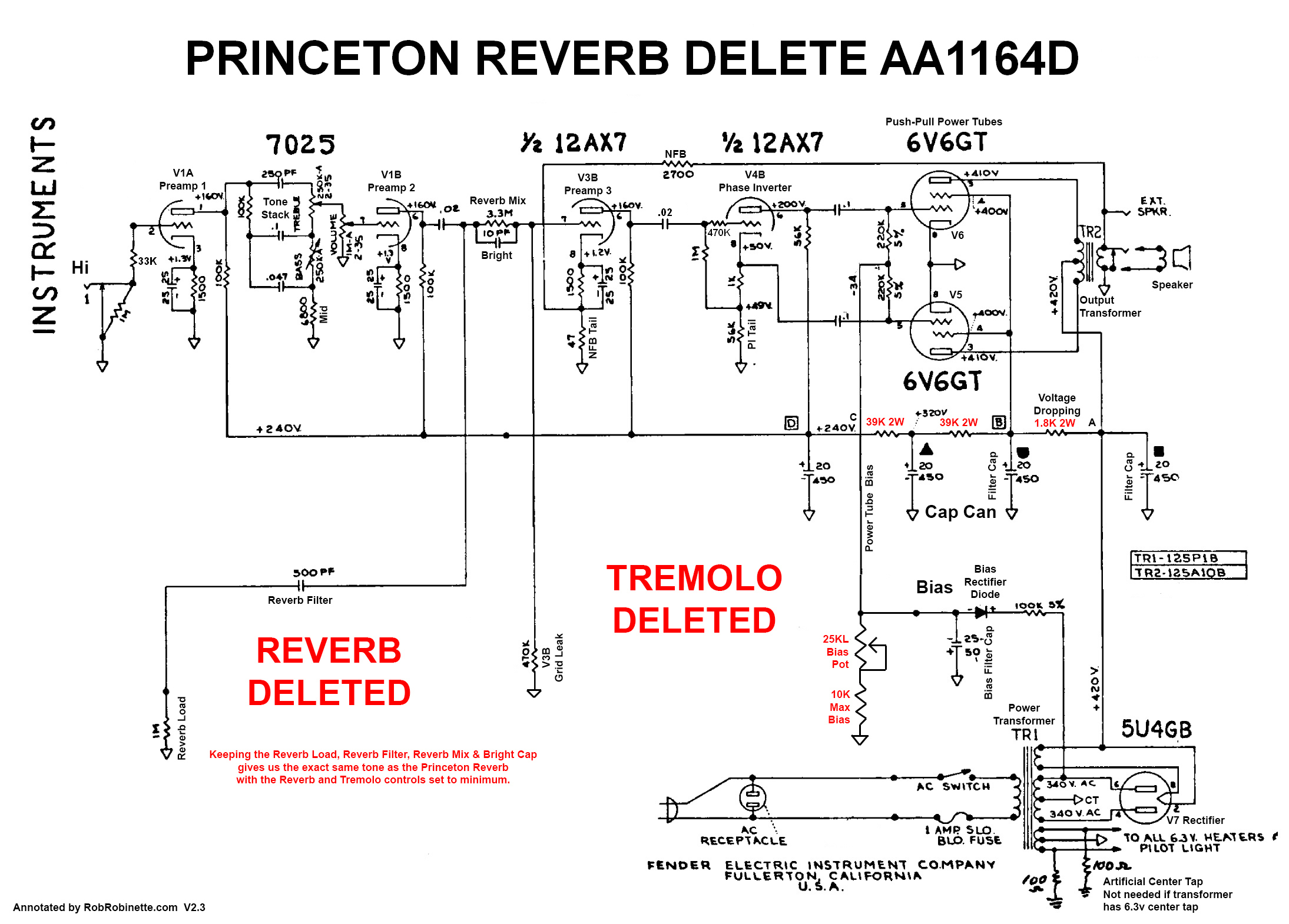
I left the 1M Reverb Driver Grid Leak resistor (Reverb Load bottom left) and the 3.3M Reverb Mix resistor + 10pF bright cap in place to faithfully reproduce the Princeton Reverb tone of the reverb and tremolo set to minimum. I added an adjustable fixed bias circuit since we don't have to worry about weakening the tremolo with a warm bias. The 25k linear bias pot can bias everything from the 6V6 to the 6L6 and EL34.
Bill of Materials For Reverb & Tremolo Deleted Princeton Reverb
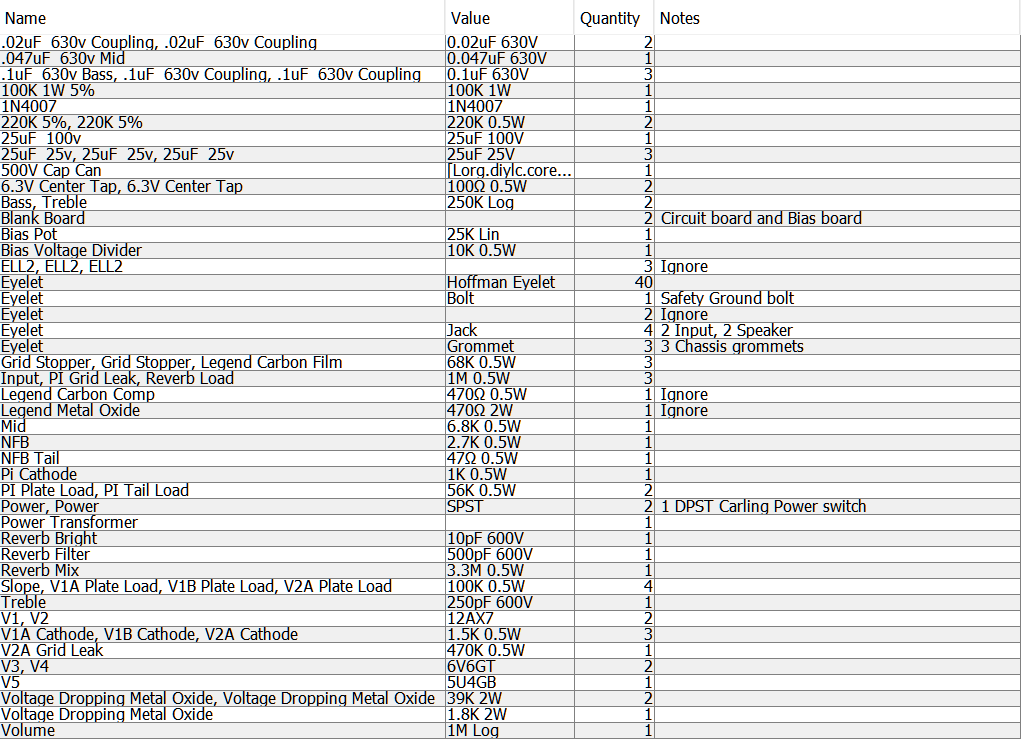
You'll also need a Princeton Reverb chassis, Princeton Reverb power and output transformer, cab, speaker and power cord. I recommend this JJ 40uF/20uF/20uF/20uF 500v cap can from Mojotone. The 40uF first filter cap will help reduce hum and slightly firm up the bottom end.
Download the high resolution pdf and DIYLC file.
See the 1 watt Micro version of this amp.
Suggested Princeton Reverb Mods
I have incorporated many of these mods into the Princeton Reverb Delete layout.
The Original Princeton Reverb
Every component function is listed. Click on the layout to see the high resolution layout. Download the pdf here and the DIYLC file here.
Annotated Schematic
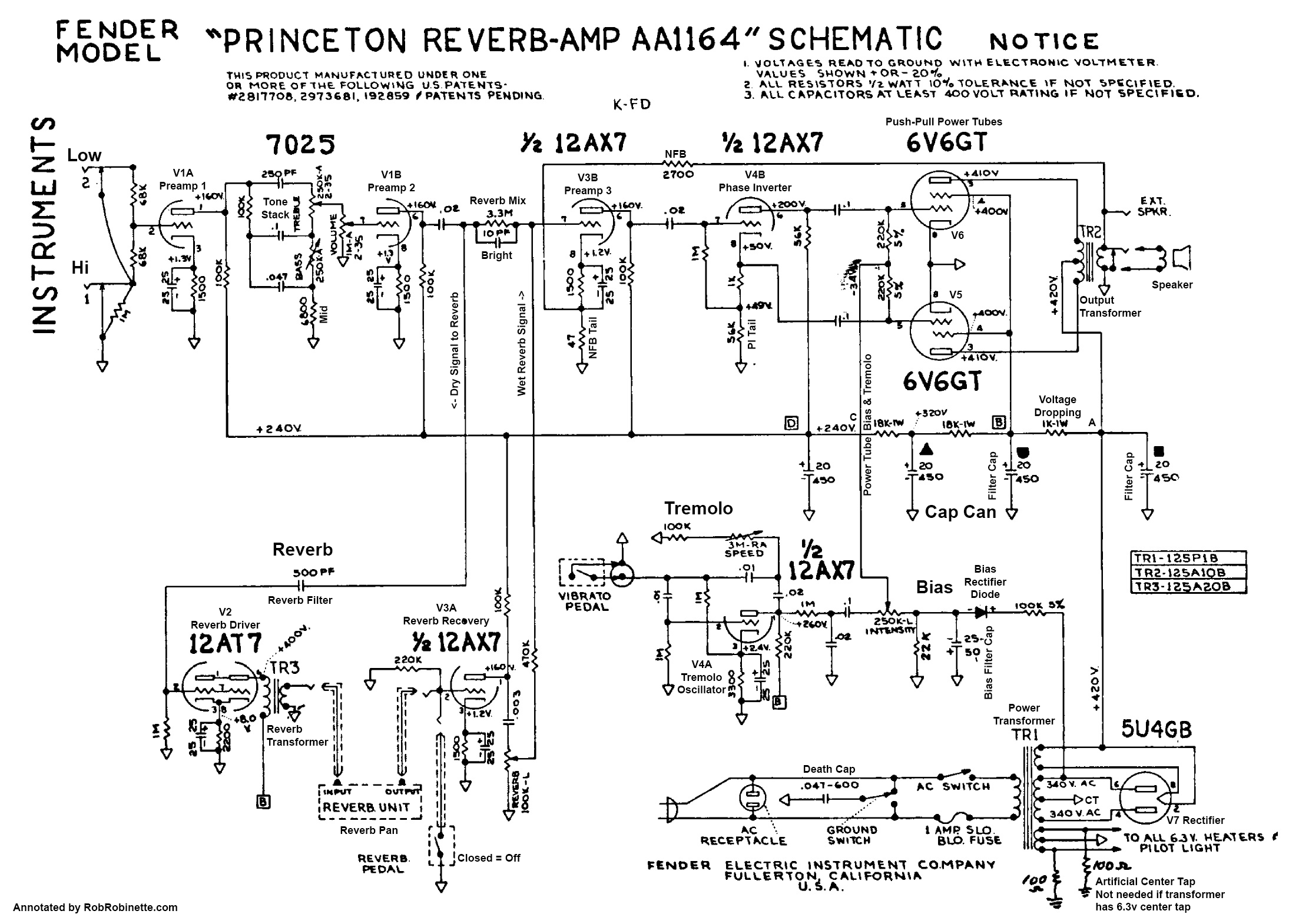
Princeton Reverb Chassis By Marcus Albrecht
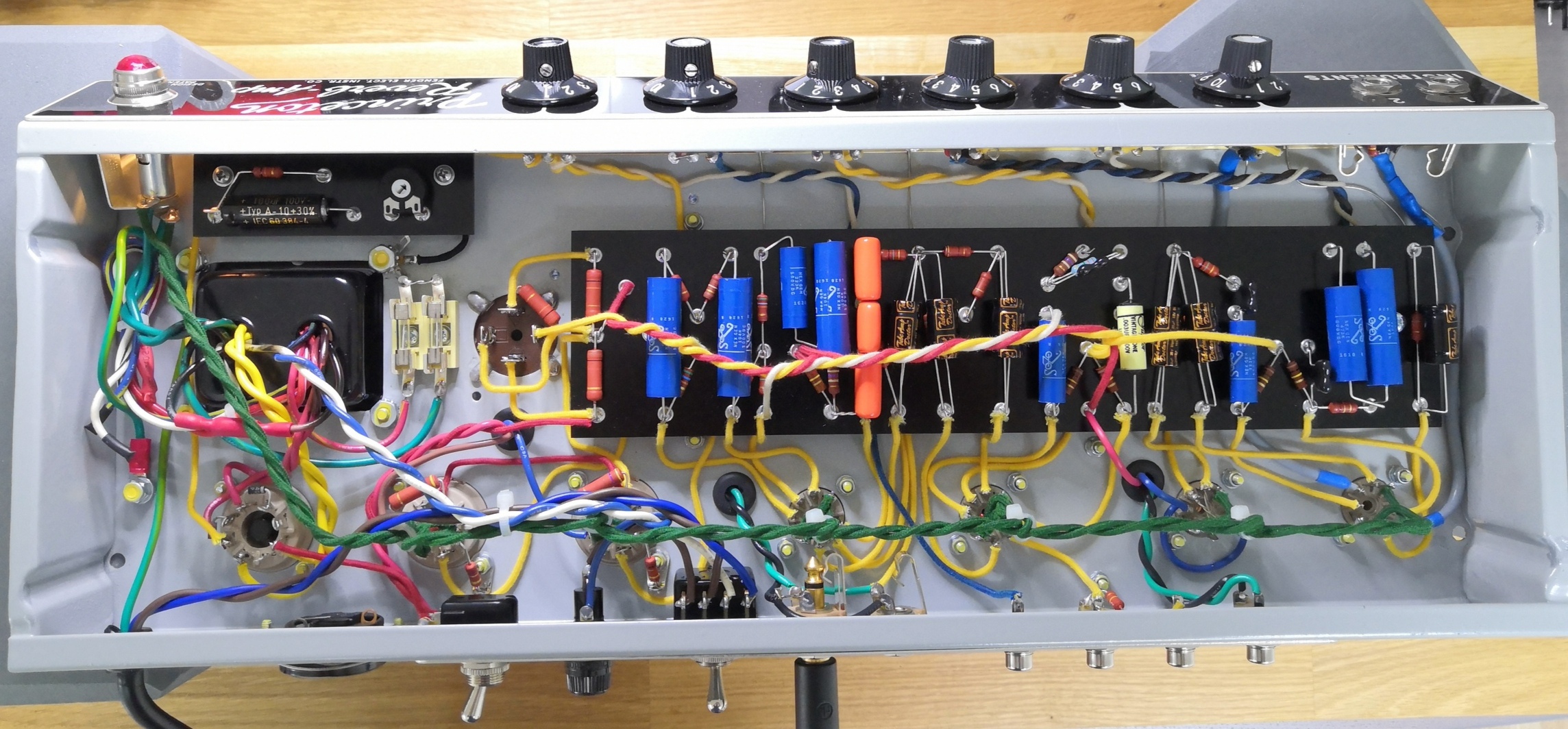
Original Princeton Reverb Fender Layout
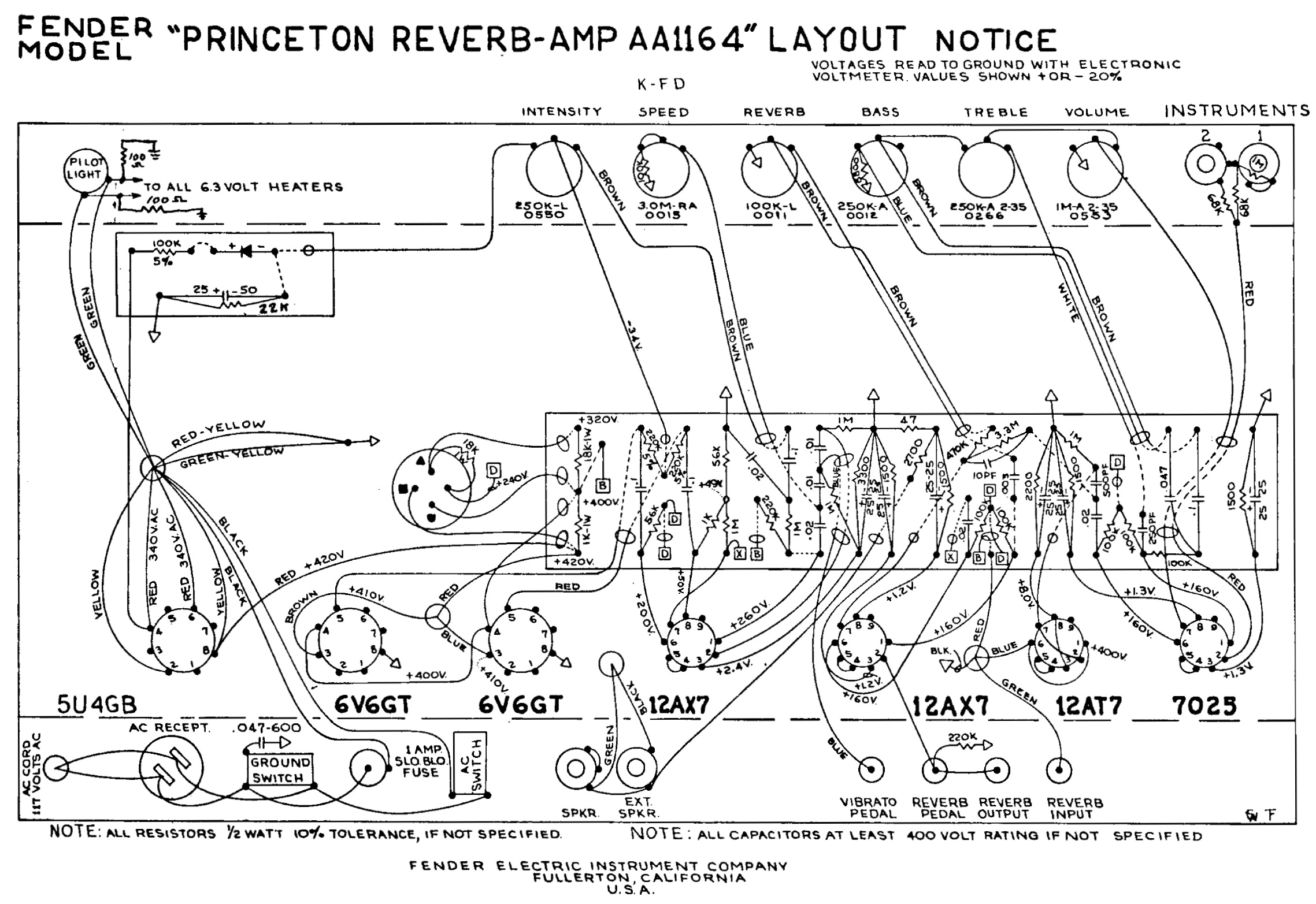
The No-Reverb Blackface Princeton

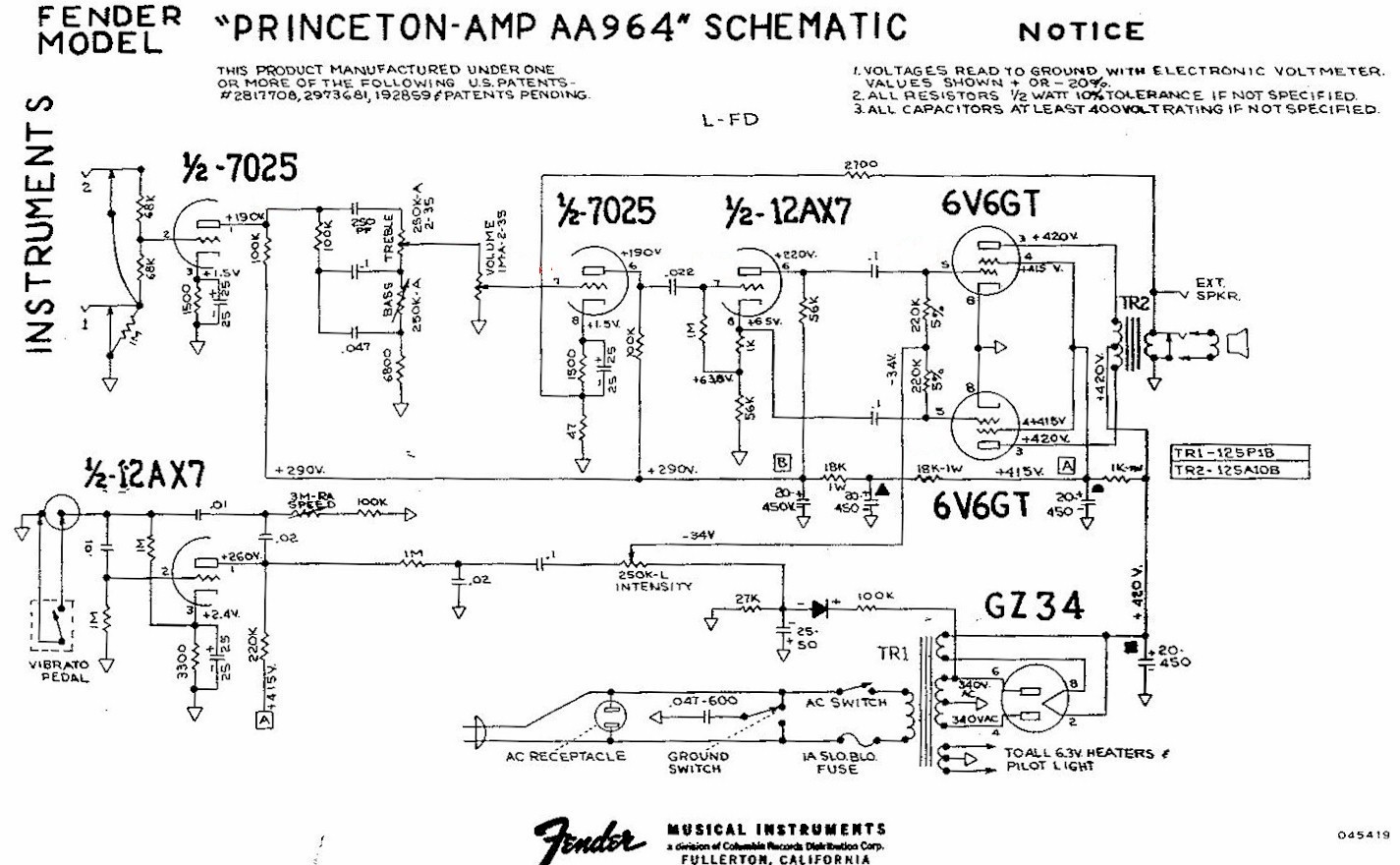
The non-reverb Princeton has only two preamp gain stages versus the Princeton Reverb's three so they are very different amps.
